| . |
| . |

| BERLIN 2014 |

| SACHSENHAUSEN |





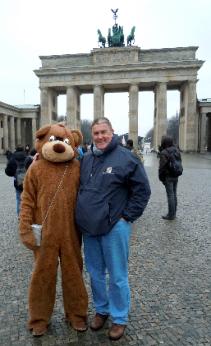

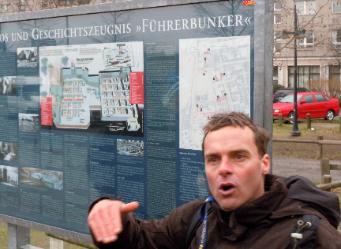


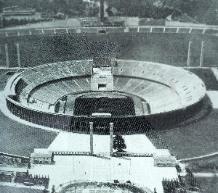



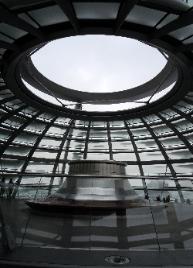
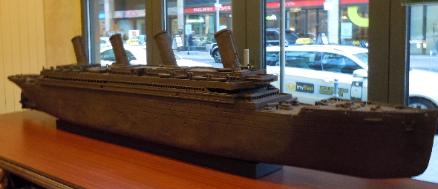


In retrospect, this trip looks like it
wasn't a whole heck of a lot of fun.
In all honesty, it wasn't, but I really
didn't plan for it to be.
I'd always wanted to visit Berlin, and
I thought that 2014, the centennial
of World War I would be a good time
to visit what was Ground Zero for
most of the grief of the past hundred
years.
wasn't a whole heck of a lot of fun.
In all honesty, it wasn't, but I really
didn't plan for it to be.
I'd always wanted to visit Berlin, and
I thought that 2014, the centennial
of World War I would be a good time
to visit what was Ground Zero for
most of the grief of the past hundred
years.

| As you look at these photos, you can draw one of two conclusions: Either the color resolution on my camera isn't very good, or Berlin is kind of a sad, gray place. In the city's defense, I will say that I was there in January. I saw the sun once--for about thirty seconds during the week I was there. I had a lovely room overlooking the Spree (left). Although I've always prided as being someone who doesn't care much about the hotels where I stay on trips because I claim that I don't go on vacations to stay in hotels, I was very happy to return to the Abion every night after a long day of walking--sometimes in snow and sleet--have a nice long sauna and hit the nice comfy bed. |
The plan was to visit the museums and the concentration camp at
Sachsenhausen, not just the cabarets and theatres--although I did that, too.
The mascot, symbol and perhaps spirit animal of Berlin is the bear. They're
everywhere from the Brandenburg Gate to the ballet posters in the Metro stations.
Sachsenhausen, not just the cabarets and theatres--although I did that, too.
The mascot, symbol and perhaps spirit animal of Berlin is the bear. They're
everywhere from the Brandenburg Gate to the ballet posters in the Metro stations.
And walk in the cold I did.
Berlin demands to seen on foot, and walking tours are the
best way to see the city.
I was fortunate to have an outstanding guide named Mike,
a New Zealander who came to Berlin to study history, fell in
love with the place and stayed.
Mike put together a reading and viewing list of books and
movies about German history, which he's happy to share
with his charges. Because it's a list that he says he
changes frequently, I won't print it here, but if you want to
drop me an email at matt@mattisch.com, I'll be happy to
send it to you.
Because Berlin was blasted to dust as Second World War
wore on, and also because Berliners aren't particularly
sentimental about their history in the years since, one
spends a lot of time on walking tours looking down at the
sidewalk, to see plaques embedded in streets and
sidewalks that provide information about what used to be
there.
For example, the Berlin Wall is gone, but a double line of
red bricks stretching across the city shows you where it
used to be. A photo of it is at the top of this page.
Throughout the city, there are thousands of small brass
markers embedded in the sidewalk to note locations where
Jews who died in the Holocaust were taken from their
homes.
At the Opernplatz, you look down to see the site where the
Nazis set fire to thousands of books (photo, top left).
What's interesting about the Mercedes in the second
picture from the top isn't the car, but the bricks it's parked
on. It's an outline of the Fuhrerbunker, where Hitler took
his life as Berlin crumbled around him at the end of the war.
By the way, here's a photo of Mike explaining why the sign
he's standing in front of is the only indicator of Hitler's
bunker. He says that the government doesn't want to give
Neo-Nazis a shrine where they can rally. Makes sense,
but it's sad that it has to be the case.
If you look waaaayyy down, you see the Ubahn. The
bottom photo at left is the entrance to the station near
where the wall used to stand, It features several prominent
quotes about the wall, including one from Ronald Reagan
when he implored Mr. Gorbachev "to tear down this wall" in
the 1980's.
Berlin demands to seen on foot, and walking tours are the
best way to see the city.
I was fortunate to have an outstanding guide named Mike,
a New Zealander who came to Berlin to study history, fell in
love with the place and stayed.
Mike put together a reading and viewing list of books and
movies about German history, which he's happy to share
with his charges. Because it's a list that he says he
changes frequently, I won't print it here, but if you want to
drop me an email at matt@mattisch.com, I'll be happy to
send it to you.
Because Berlin was blasted to dust as Second World War
wore on, and also because Berliners aren't particularly
sentimental about their history in the years since, one
spends a lot of time on walking tours looking down at the
sidewalk, to see plaques embedded in streets and
sidewalks that provide information about what used to be
there.
For example, the Berlin Wall is gone, but a double line of
red bricks stretching across the city shows you where it
used to be. A photo of it is at the top of this page.
Throughout the city, there are thousands of small brass
markers embedded in the sidewalk to note locations where
Jews who died in the Holocaust were taken from their
homes.
At the Opernplatz, you look down to see the site where the
Nazis set fire to thousands of books (photo, top left).
What's interesting about the Mercedes in the second
picture from the top isn't the car, but the bricks it's parked
on. It's an outline of the Fuhrerbunker, where Hitler took
his life as Berlin crumbled around him at the end of the war.
By the way, here's a photo of Mike explaining why the sign
he's standing in front of is the only indicator of Hitler's
bunker. He says that the government doesn't want to give
Neo-Nazis a shrine where they can rally. Makes sense,
but it's sad that it has to be the case.
If you look waaaayyy down, you see the Ubahn. The
bottom photo at left is the entrance to the station near
where the wall used to stand, It features several prominent
quotes about the wall, including one from Ronald Reagan
when he implored Mr. Gorbachev "to tear down this wall" in
the 1980's.
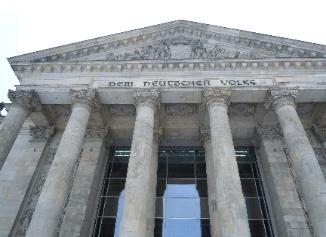
| of it, one the bleakest things I saw in the city was the recently restored Reichstag, where the German parliament, or Bundestag, meets. Like everything else, the original Neo-Classical building (center) was pounded by bombs in WW2 and left to rot until Germany was reunified in 1989. When was restored as the capital, the old building was given a billion dollar makeover, which included a hideous open-air glass dome (photo left). The giant metal shaft (photo right) could probably symbolize a lot of things, but the one they're going with is that allows natural light in to the Bundestag's chamber. Because Germans are a hardy lot, the dome was packed with bundled-up schoolchildren when I visited. Less crowded was the surprisingly good restaurant on the roof of the building. Like all the non-traditional German restaurants where I ate on the trip, the menu was much too eclectic--and downright off-putting. (Would it kill them to serve a bratwurst at the Bundestag? I know for certain that you can get a hamburger at the U. S. Capitol!) |
| Which is not to say that I was deprived of bratwurst on the trip. My visit wasn't nearly as bleak as it's starting to sound. It happened to coincide with Berlin's annual Green Fair. It's a combination Garden Show and exposition of food, wine and beer from all over the globe. Every region of every country in Europe is represented as well as lots of more exotic and far-flung locales. For instance, the Foster's beer booth was serving kangaroo bratwurst with its beer (left). I opted for the traditional German fare (center), and the truly adventurous could look into what the Americans were selling (right). |
| Nor did the wonderful food end there. While the three "world class" tourist restaurants I visited were uniformly disappointing, I ate well. Each day began and ended with a fresh pretzel from the kiosk by the U-Bahn station I passed going and coming every time I left the hotel. They were wonderful. Also, in the process of walking around the city, I found the famous Fassbender and Rauch Chocolatiers. They claim to be the "largest chocolate in the world." I don't know what that means, but I'm guessing that scale model chocolate replicas of the HMS Titanic and the Brandenberger Tor have something to do with it. |

The last thing I want to share about the trip is something that
I--alone, apparently--found odd. Near my hotel was a movie
theatre called the Zoo Palast. It's a famous theatre where
lots of movies have their German premieres. (While I was
there, I saw The Secret Life of Walter Mitty in German there.
It wasn't any better.)
Anyway, when I was walking back to the hotel one day, I
passed the theatre and noticed that they were setting up for
the German premiere of The Book Thief. In case you don't
know, the "book thief" in the title steals books from the pile
that are about to be torched. This was the same day that I'd
seen the plaque in the sidewalk where it had actually
happened, so I was surprised to see that--to provide
decoration for the red carpet that the celebrities would be
walking that evening--they'd set up little piles of books to
suggest the famous burning of the books (photo left).
Do you think that's strange, or like most everything else in the
world, is it just me?
I--alone, apparently--found odd. Near my hotel was a movie
theatre called the Zoo Palast. It's a famous theatre where
lots of movies have their German premieres. (While I was
there, I saw The Secret Life of Walter Mitty in German there.
It wasn't any better.)
Anyway, when I was walking back to the hotel one day, I
passed the theatre and noticed that they were setting up for
the German premiere of The Book Thief. In case you don't
know, the "book thief" in the title steals books from the pile
that are about to be torched. This was the same day that I'd
seen the plaque in the sidewalk where it had actually
happened, so I was surprised to see that--to provide
decoration for the red carpet that the celebrities would be
walking that evening--they'd set up little piles of books to
suggest the famous burning of the books (photo left).
Do you think that's strange, or like most everything else in the
world, is it just me?
| Until this trip to Berlin, my only contact with the Holocaust had been listening to an elderly woman talk about her experiences during a family vacation to Galveston in 1968 and a visit to Dachau in 1991. Naturally, I'd read a lot about it and thought I knew a few things, but nothing could really prepare me for a visit to the nightmare that is Sachsenhausen. It's just a short ride out a commuter train from the center of Berlin, and when you get to the town of Sachsenhausen, you--like hundreds of thousands of prisoners--who were transported here by train--walk through the middle of the town to the camp. It's such a pretty little town--you just wanted to strangle everybody who lived there during the war who looked out their windows every day to see prisoners marching toward the camp. |
| Sachsenhausen is in what used to be East Germany, so when the Communists got around to erecting a memorial to the victims of the camp, they acknowledged the Communists --who were compelled by the Nazis to wear red triangles on their clothing. |
| Three men or women to a narrow bunk--stacked three and four high. Can you imagine? |
| One of the few structures in Berlin to survive the war was the Olympic Stadium (as it appeared in 1936 above) where Jesse Owens ran to fame in front of Hitler and his cronies. It's a beautiful stadium, and like everything else in Berlin, it's just undergone a billion dollar renovation. |
| I didn't do this, but one of the more unique ways to see Berlin is by Trabi, the awful--but curiously cute--car that the East Germans built out of Play-Doh and cardboard. Now you can rent them and drive them around town. Every day, I saw a little Trabi safari tooling down the street. The drivers looked like they were having a blast. |

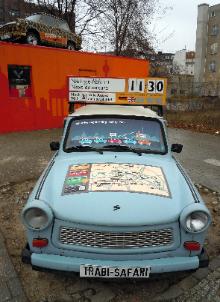
| Of course, seeing the place on a cold, bleak, snowy day--the kind of weather that would have killed hundreds of people in the camp in their unheated bunkhouses--made the experience even more horrifying. |